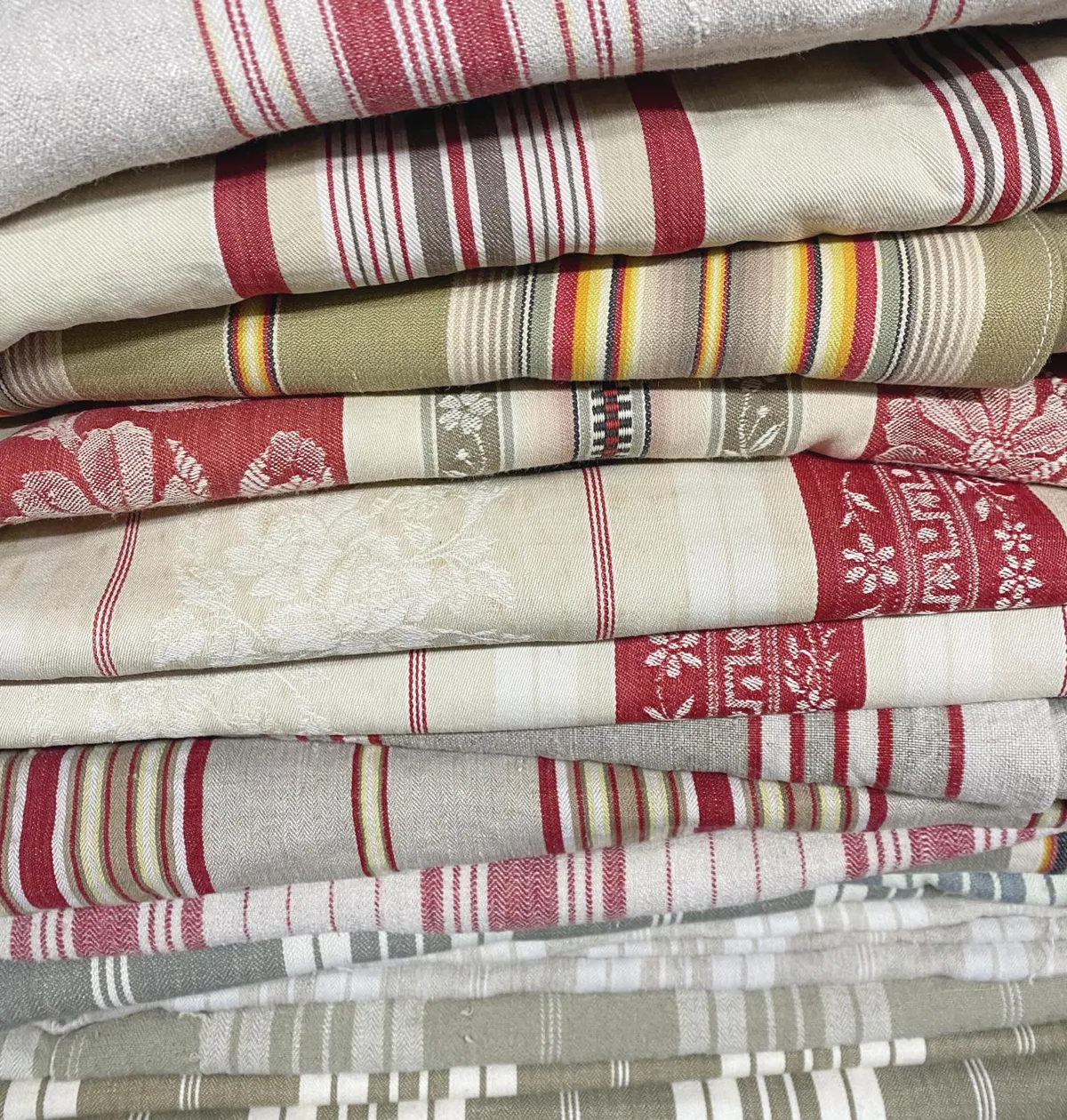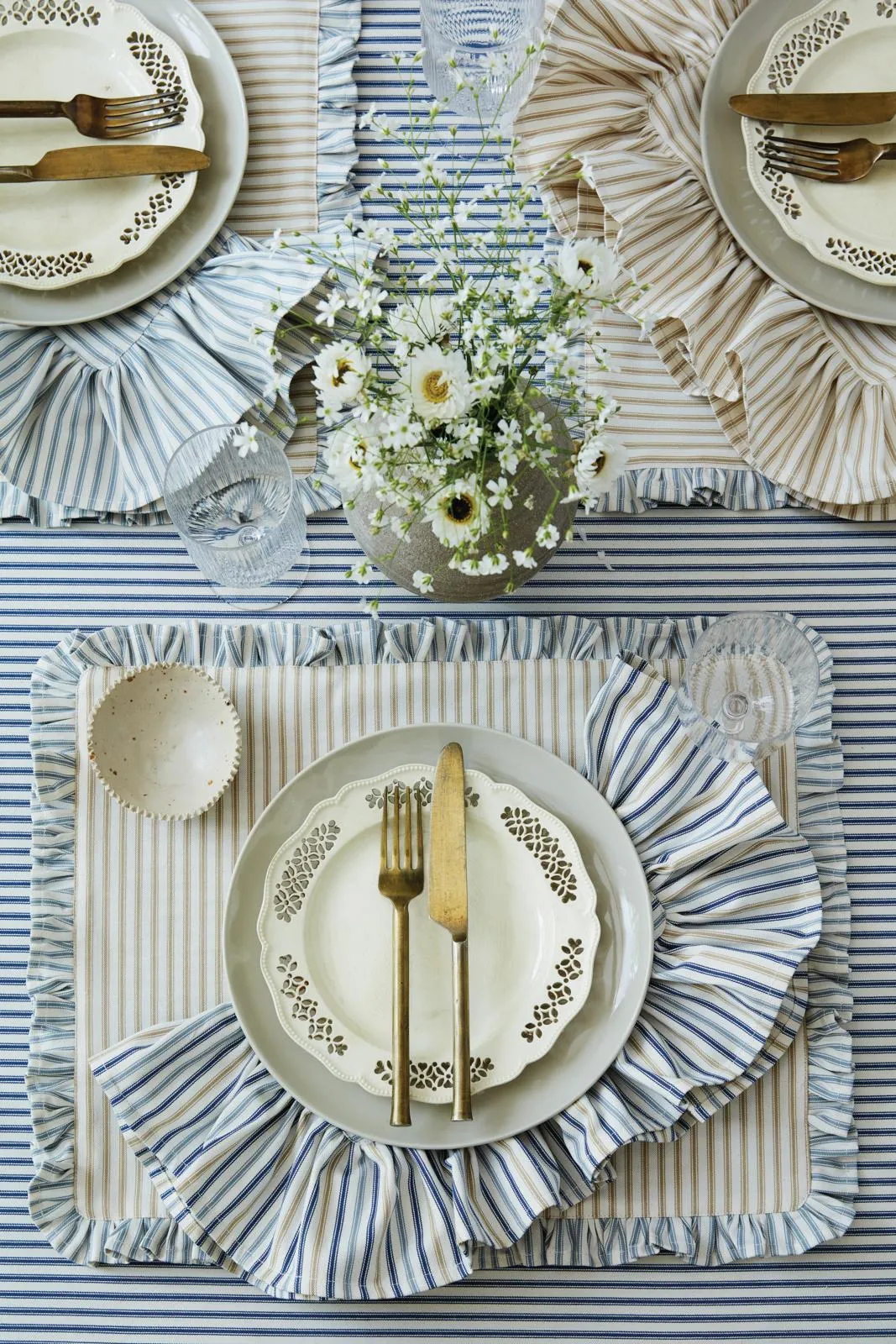Through history, every textile knew its status, from commonplace weaves to luxury silks and satins. The ticking stripe was ranked among the lowly. It was used to make butchers’ aprons, army tents and even corsets, but most of all it covered mattresses.
Ticking was first known in Europe during the medieval period. Its appeal as a cover for mattresses came from the density and strength of a weave that helped to stop the straw or feather inner from working through. True ticking has always been, and still is, a herringbone weave. This takes each weft thread over two or three warp threads instead of over just one, so more threads are packed together, giving the weave greater density and a characteristic diagonal line. Many feather pillows still have cases in herringbone, so history has proved the point.
In early periods the bed was a mattress – the most basic in straw with a plain herringbone casing. In noble and wealthy households, a framework was raised up of webbing and supports that held a straw mattress, followed by one filled with wool or hair and the feather-filled mattress on top, the only part of the arrangement known as the bed. Suddenly The Princess and the Pea makes sense. The mattress cover was called a tick, from the Greek theka, meaning cover, and the fabric itself as ticking.
Ticking stripes in black and white became the standard colour for mattress covers in Britain, with Manchester becoming the centre for the fabric’s production. Other countries had their own designs, particularly France, where more decorative stripes were known as toile à matelas, while in the United States, blue and white ticking became the established colourway.

Ticking’s humble status continued until the 1940s when American decorator Sister Parish discovered its wider possibilities and began to partner it with patterned chintz in rooms that she designed for her rich and influential clients. It caused a suitable stir when it was picked up by John Fowler, of Colefax and Fowler, who recognised its useful simplicity in balancing elements in the interiors that he designed.
More significant for the wider public in Britain was the opening of Ian Mankin’s London store in 1983. It stocked utility fabrics from canvas and calico to ticking, which he described as offering ‘accessible elegance’. Mankin introduced tickings in attractive colours for interior use and retained the historic tradition of weaving herringbone. Ticking gathered momentum over the following years, becoming an established element in decoration – the perfect companion to busy prints, as well as for those preferring uncluttered interiors.
When Ian Mankin retired in 2008, the business was acquired by the family-run mill in Lancashire, where many of its fabrics were – and still are – woven. As present chairman and master weaver David Collinge explains, ‘at Ian Mankin we are a bit obsessed about ticking stripes and ensure the points in the herringbone weave align in the middle of each stripe. We only weave tickings in natural cotton yarns with no additives. The longer floats in herringbone weave give a smoother surface, which is good for abrasion resistance, allowing the fabric to drape as curtains, and also for upholstery where fabric is shaped around corners or made into piping.’ The company has recently increased the range of its Ticking Archive One collection with an input of new bright stripes taking total colour options to 50.

Other companies have realised the value of ticking stripes. Nicole Fabre, a specialist in French textiles, includes two herringbone tickings, Lavandou and South Creake, based on her archive. GP & J Baker has introduced Sherborne Ticking in its Bridport collection, and Colefax and Fowler has Bendell Stripe, all in the traditional weave.
Antique tickings can be found too. Polly Lyster of Dyeworks has just brought back some 18th-century hemp tickings from France, and textile dealer Su Mason always has a selection of antique French tickings in reds, blues and neutral stripes. Where once this stripe was humble, now it ticks the box for many interior situations, though oddly enough it is seldom now seen covering mattresses on our beds.